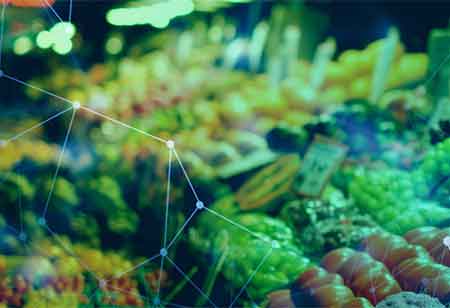Thank you for Subscribing to Food Business Review Weekly Brief
What Are the Latest Trends Shaping the Foodservice Industry?
Some prominent trends impacting the food service business include capital "I" innovation, the need for environmental sustainability, and economic concerns.

By
Food Business Review | Saturday, August 31, 2024
Stay ahead of the industry with exclusive feature stories on the top companies, expert insights and the latest news delivered straight to your inbox. Subscribe today.

Some prominent trends impacting the food service business include capital "I" innovation, the need for environmental sustainability, and economic concerns.
FREMONT, CA: The following year is shaping up to be another breakthrough year for the food service industry. Foodservice and manufacturing companies experienced numerous obstacles, many of which may be traced back to severe economic uncertainty throughout the United States. However, when businesses were confronted with the unexpected shifts brought about by fluctuating economies and inflationary pressures, they were forced to adapt and innovate.
Restaurants and other food service businesses are seeking innovative ways to operate efficiently in the face of labor shortages, rising expenses, and changing consumer demands.
As the landscape shifts, the food industry will find new methods to exhibit resilience and strengthen its position as one of the world's most robust sectors.
Top trends that foodservice businesses should be aware of:
Innovation with a capital "I”: From cutting-edge food packaging to menu trends and responding to ever-changing consumer behavior patterns, the future promises to be another remarkable year for food service innovation. Restaurants, convenience stores, supermarkets, caterers, and fast-casual establishments are pushing culinary creativity to new heights as customer tastes evolve.
Operators are searching for effective methods to enrich the whole eating experience, whether on-premises or off. This includes customizable menus that accommodate dietary requirements and a growing emphasis on plant-based offerings. Consumers are also paying more attention to ingredients, providing operators an even greater opportunity to promote their locally derived stories. With increased consumer demand for eco-friendly packaging solutions and the need for improved food safety and preservation, there is a strong hunger for material innovation to fulfill customer expectations and pave the way for a more sustainable future.
The need for environmental sustainability: In an era when environmental impact is top of mind for businesses and customers alike, the food service industry is working hard to promote sustainability. One area of focus is reducing food waste. Food waste has far-reaching consequences, including increased greenhouse gas emissions, overutilization of water resources, and land degradation. It has become essential for operators to create effective strategies that not only reduce waste but also incorporate sustainable packaging.
Implementing local and state-specific legislation also encourages operators to adopt more sustainable packaging practices. Each state and municipality has its approach to food service packaging regulations, which can complicate matters for businesses that operate in many states. These regulations frequently focus on the materials used in packaging and how they are disposed of after usage. Collaboration with famous suppliers, industry groups, and other stakeholders is crucial for staying ahead of regulations. Packaging has evolved into a crucial component of any food service sustainability strategy, ranging from compostable or recyclable options to solutions that extend the shelf life of fresh food and takeout.






